
The end of the gardening season comes as a relief to most of us. After months of managing massive daily harvests of zucchini and tomatoes, cooler weather and slower growing plants can feel like an opportunity to catch your breath.
However, it’s a mistake to think you can simply abandon your garden as things wind down, only to pick things up again in the spring.
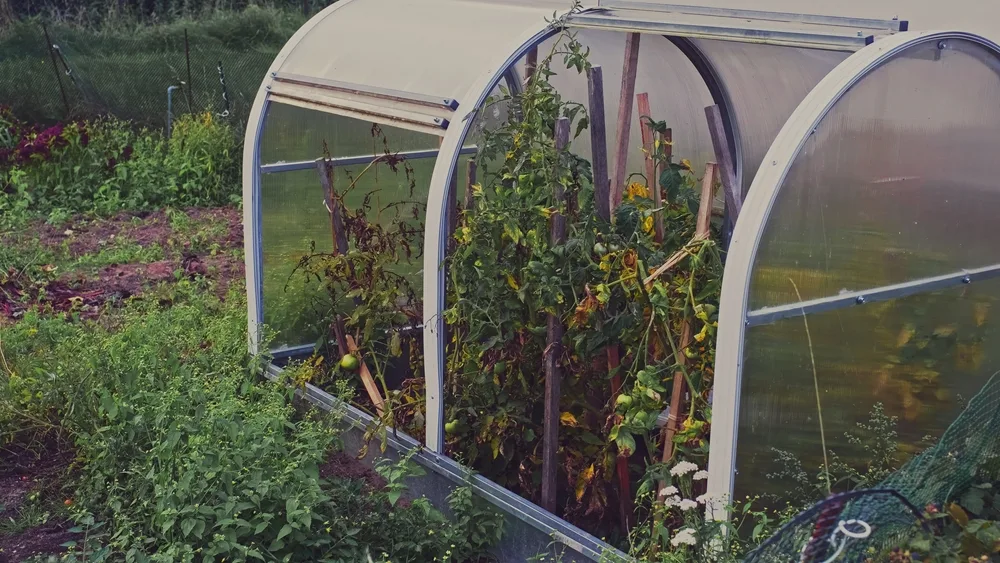
There are numerous tasks to complete before winter weather if you want to set yourself up for success in the next growing season.
Ignore this advice, and you’ll soon find yourself dealing with unwanted insects, disease outbreaks, and a fresh onslaught of weeds.
Here’s a look at some of the ways to shut down the garden at the end of the growing season for better results in the long run.
1. Harvest Everything Salvageable
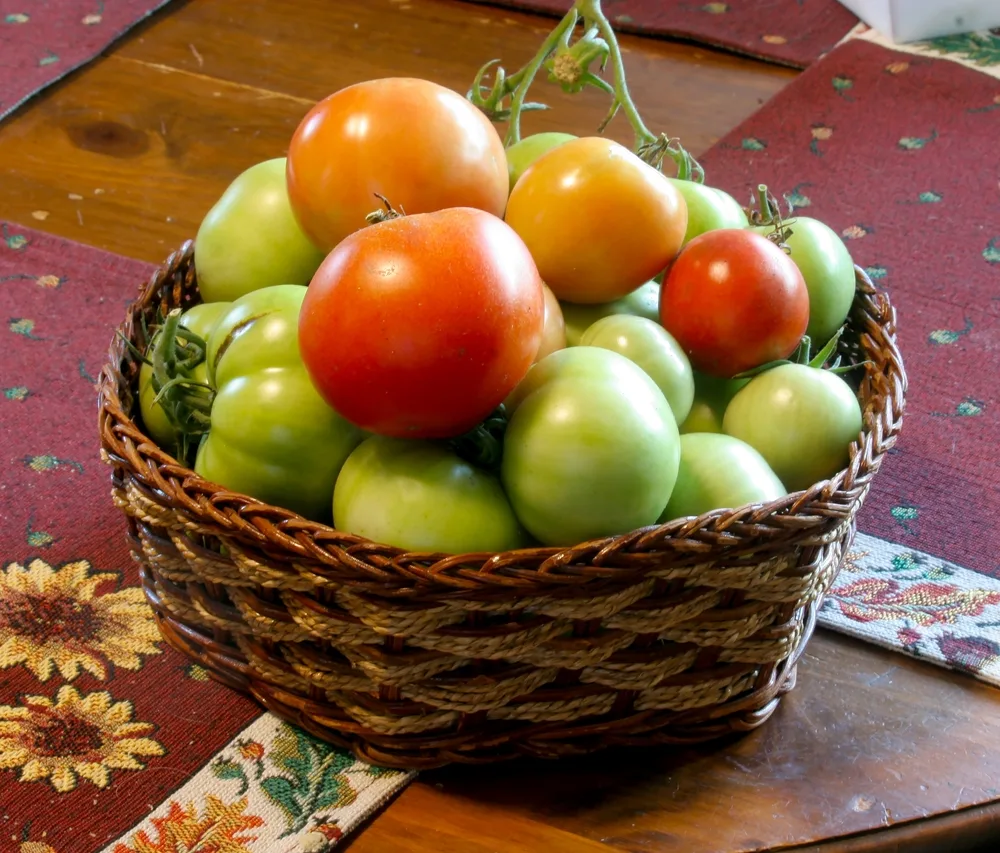
As the seasons start to turn, any heat-loving plant will struggle. This is the time to pull the last tomatoes and peppers off the vines, chop down your herbs and freeze or hang them to dry, and pull in all your remaining potatoes.
Green tomatoes will ripen quickly if you leave them on a sunny windowsill. Alternatively, you can store them in covered boxes with good airflow to allow them to slowly ripen over time so you can enjoy them into the winter.
2. Start Saving Seeds
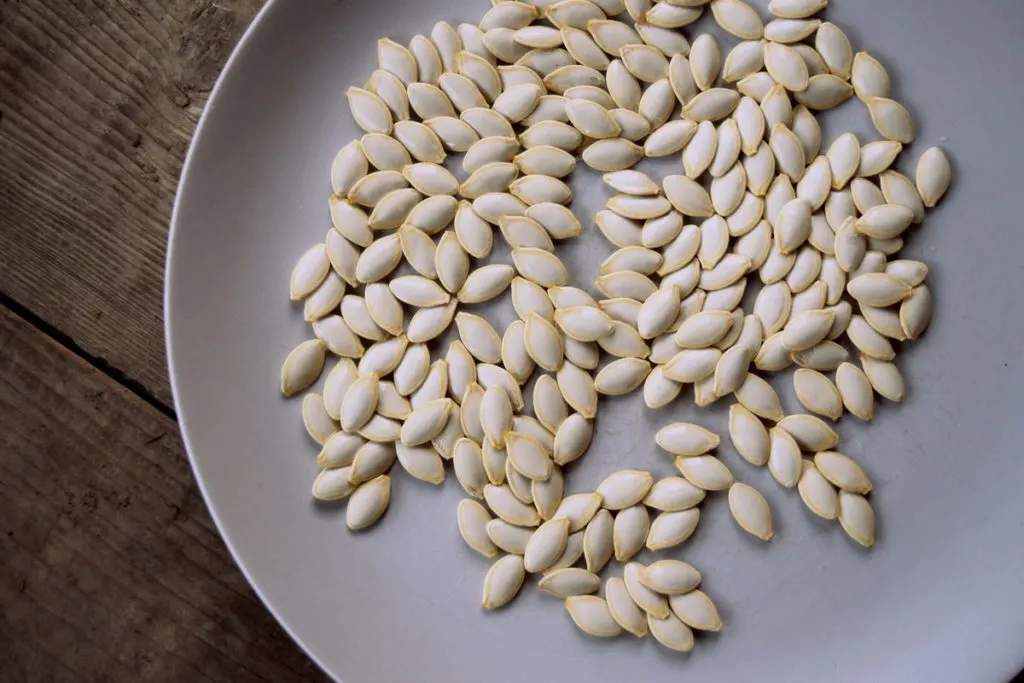
Save money on next year’s garden by preserving your favorite varieties now.
Annual seeds are easy to save—just gather them once the plant starts to wither, place them in paper envelopes (carefully labeled) and store them in a cool, dry place.
And as I learned the hard way, make sure they are stored safe from hungry rodents!
Check out these articles to learn more about how to save tomato, pumpkin, zucchini and cucumber seeds.
Note that your effort is wasted if you attempt to save seeds from hybrid plants, as they won’t come up true to their parent’s traits.
3. Cut Down Standing Plants
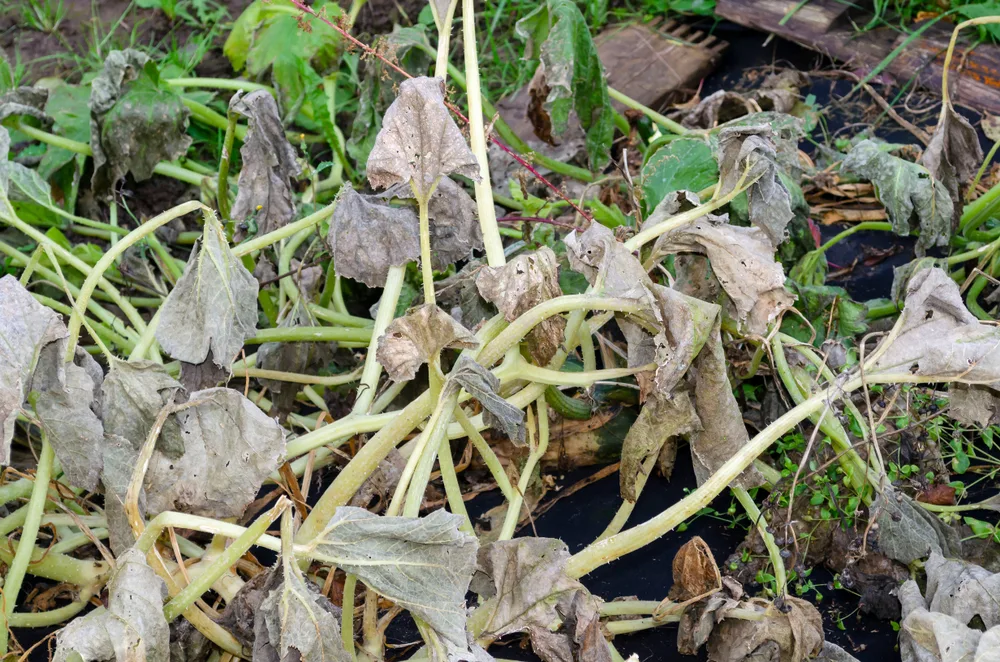
Once you’ve harvested what’s salvageable, it’s time to pull out your remaining garden plants. Cut them down either at soil height or pull them up entirely by the roots, and toss any healthy plant material into your compost pile (so long as it hasn’t gone to seed).
You’ll do best to leave bean and pea roots in the soil, as these nitrogen fixers will release lots of nitrogen into the ground as they rot over the winter. It’s also a good idea to “chop and drop” their stems so that they break down as well.
Make sure you pull out all garden weeds as well so that they can’t establish permanent root systems or drop seeds into the soil.
Any plant that shows a hint of disease needs to be thrown away far from your garden soil so that you reduce the risk of it contaminating next year’s crop.
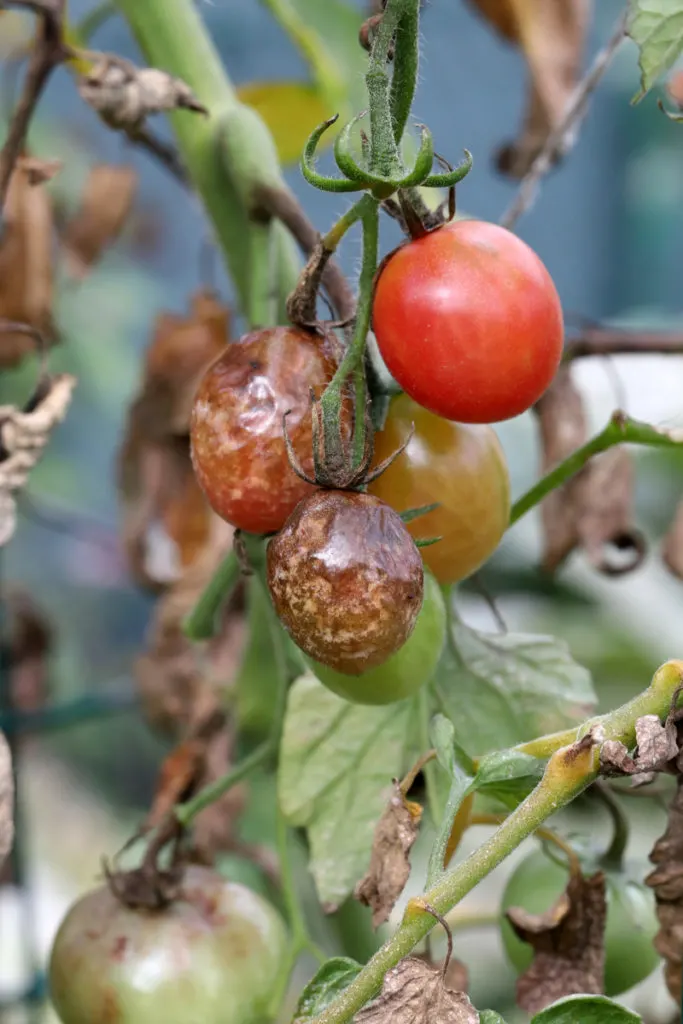
This is the single most beneficial thing you can do to shut down the garden at the end of the growing season if you want to stop the spread of bacteria, fungi, and other disease problems.
I especially recommend getting rid of squash and zucchini plants, as they create ideal habitat space for squash bugs to overwinter. Leave them in place, and you might find yourself with an overwhelming infestation in the spring like I did this year.
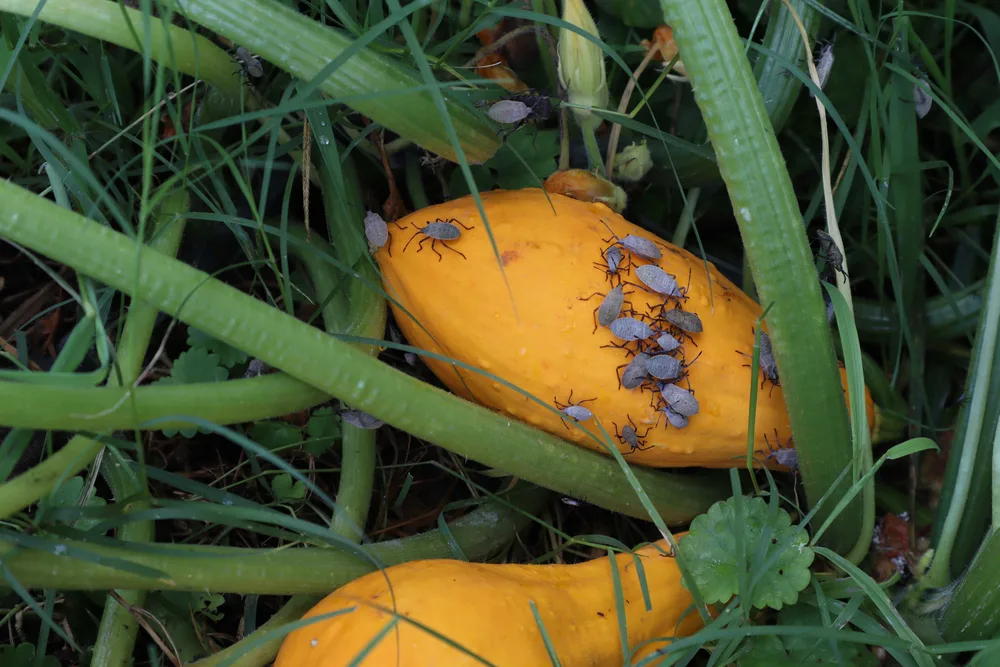
4. Dig up Any Annuals or Perennial Bulbs
This is the time of year to consider moving some of your prized plants indoors. Annual herbs like basil and chives can be potted and placed near a sunny window, and any perennial bulbs like dahlias and canna lilies will do better when dug up and then replanted in the spring.
Many perennials like daylilies and bee balm can be pruned in the fall, though it’s best to wait until after the first frost so that the plant is starting to die back naturally, lest you accidentally encourage new growth.
5. Till the Soil (Or Not)
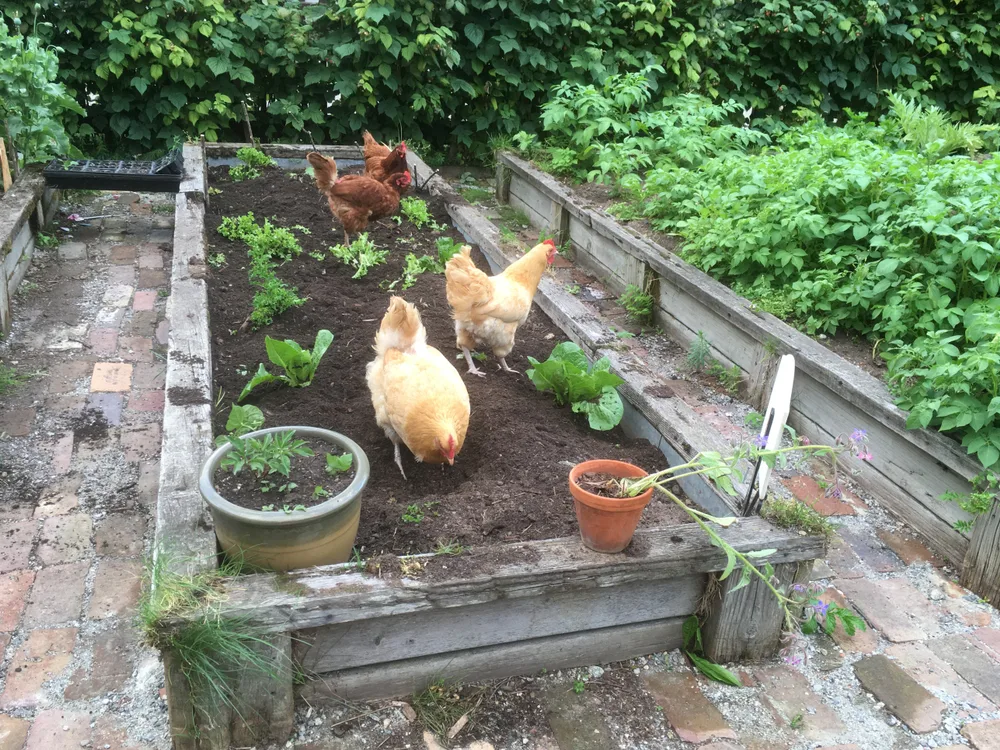
Many gardeners like to till up their garden soil one final time before winter. This breaks up any lingering plant material so that it decomposes faster and also disturbs insects attempting to build burrows, which makes it easier for birds to find them.
Others have the mindset that you’ll achieve better soil health over time by leaving it undisturbed from intensive tilling. In this case, you might want to release your chicken flock into your growing space.
These birds will do an excellent job of scratching up the soil and eating bugs—turning next spring’s potential problem into fresh eggs in the process.
6. Perform a Soil Test
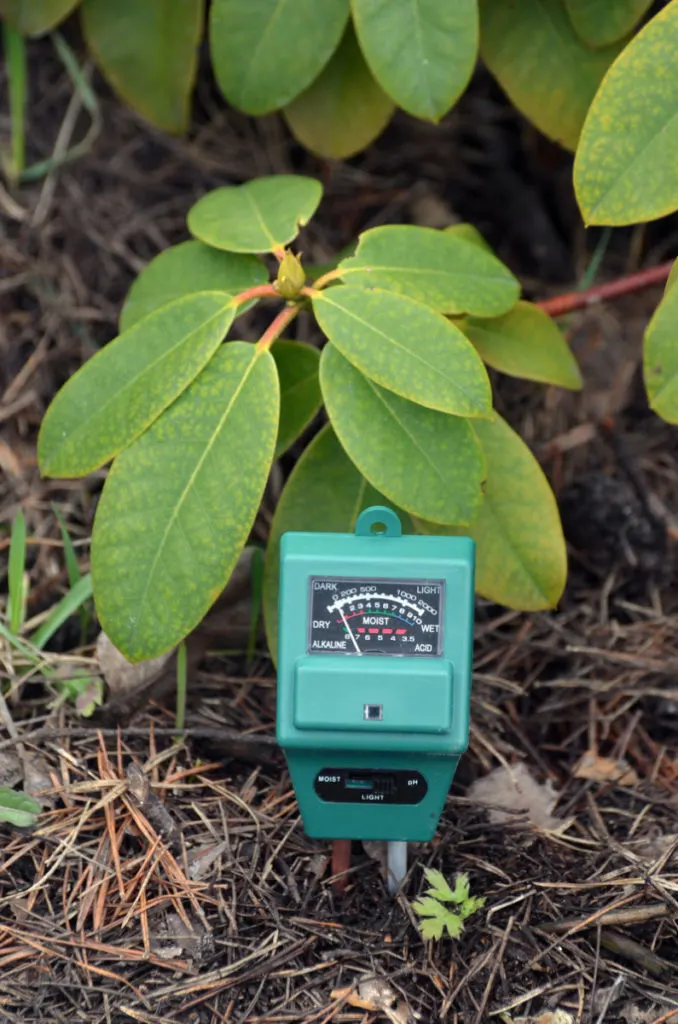
Fall is the ideal time to perform a soil test, as it lets you plan your amendment strategy for the spring. Contact your local county extension office to order a test and get advice for the best soil amendments and cover crops for your region.
7. Add Garden Amendments
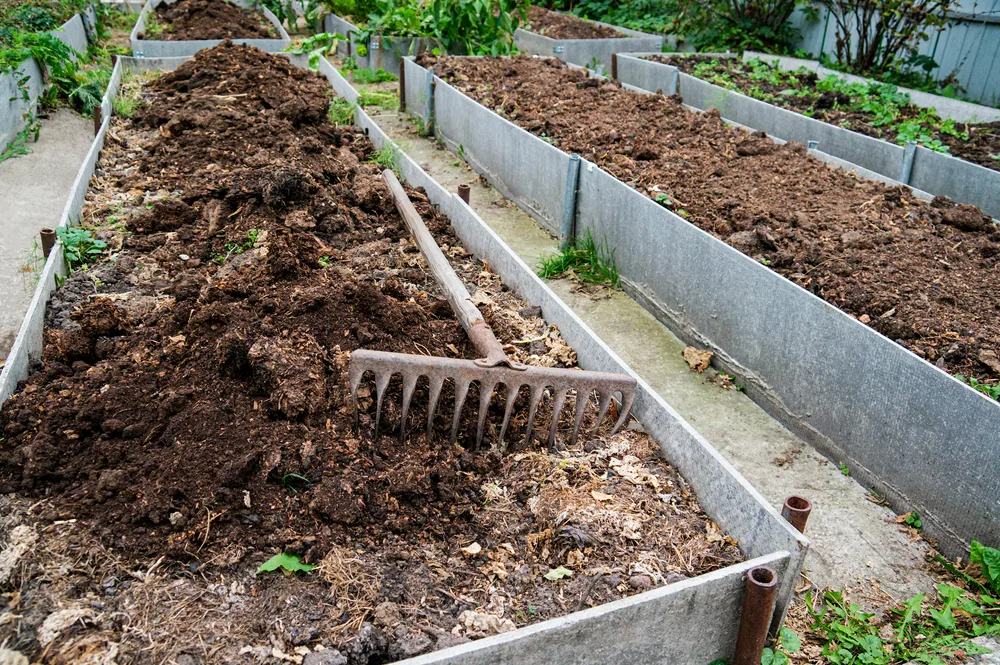
Depending on the results of your soil test, you might want to start amending your soil immediately. For instance, lime is often added before the first frost of the season.
Late fall is also a great time to spread aged manure or compost throughout your vegetable plots. The cycles of freezing and thawing will help it decompose throughout the winter and provide your young spring plants with a nutrient boost right when they need it most.
8. Lay Down Mulch or Plant Cover Crops
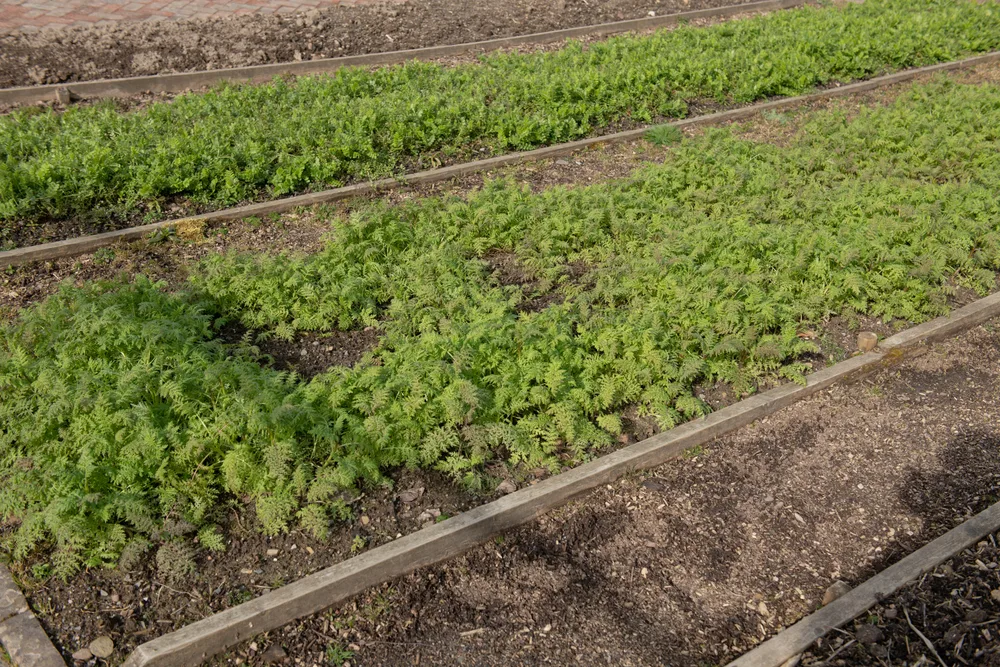
You don’t want your garden soil exposed to the elements over the winter months, so it’s a smart idea to add a layer of mulch to your abandoned beds. This can be any organic material, from wood chips to grass clippings, straw, or chopped leaves.
Not only will this material break down to add organic material to your soil, but it also works to improve water retention and prevent soil erosion. Smaller particle sizes tend to be better, as they will break down faster.
Another option is to plant a fall cover crop, preferably at least four weeks before your first frost date.
This crop will take in sunlight all winter long and pull nutrients into the top layers of soil. Once spring hits, you can till it in before the plants go to seed and bury the plant material in the dirt. It will start breaking down within a few weeks and add natural fertility to your garden beds.
Again, your local extension office will be an excellent resource for choosing the right cover crops for your situation. They can also help you factor in your soil’s nutrient needs based on your test results.
9. Clean Your Garden Tools
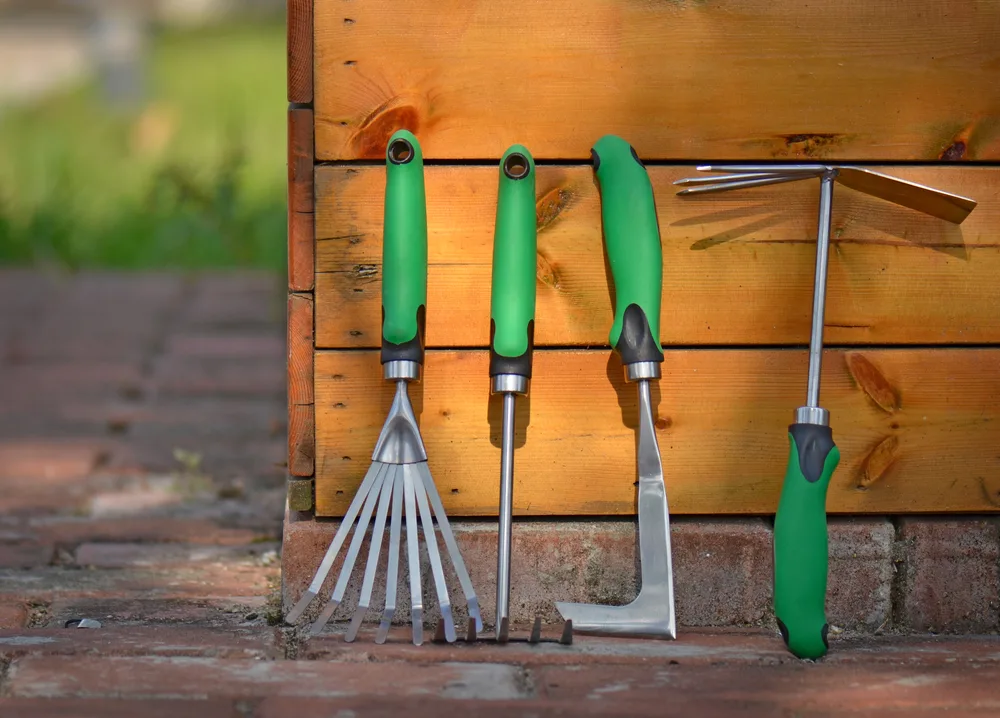
Make sure your stirrup hoe and prized trowel are ready to go in the spring by giving them a careful cleaning at the end of the season. Any lingering soil can lead to rust, so use a wire brush to scrub off every speck.
This is also an opportunity to disinfect any tool that might have come in contact with diseased plants. Ignoring this step may cause you to inadvertently spread the pathogen to next season’s plants. Don’t skip cleaning tomato cages for this step!
10. Winterize Your Water Setup
The last thing you want to face this spring is a burst irrigation system from a hard freeze. Drain any hoses and other permanent irrigation equipment, and bring as much indoors as possible to store it for the offseason.
11. Plant Garlic
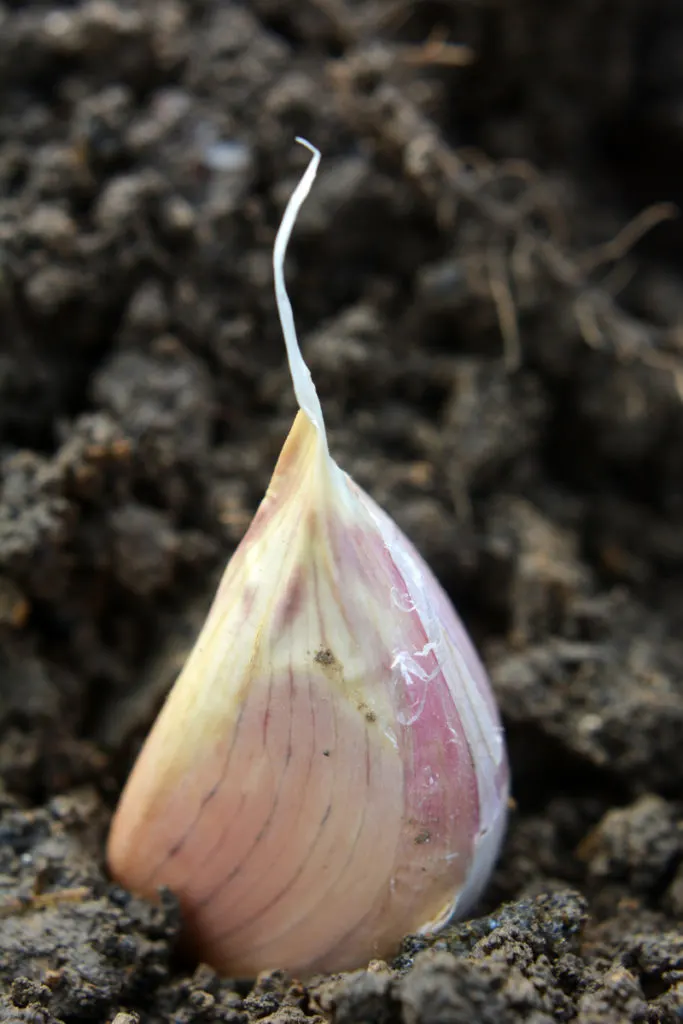
This allium thrives when given the opportunity to grow throughout the winter. You’ll do best to plant your bulbs in mid-autumn for a late summer harvest.
For my growing zone, this means I try to get my garlic in the ground a week or two before Halloween.
Related Reading: Planting Garlic In Fall – Everything You Need To Know
12. Expand Your Growing Space
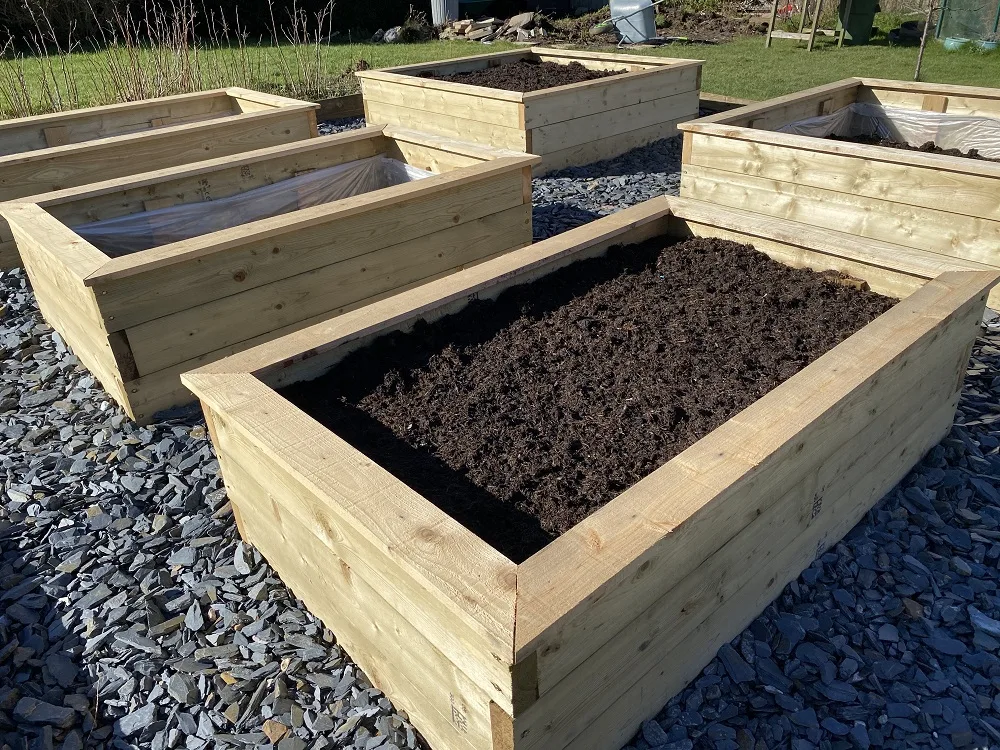
Fall is the ideal time to expand your garden, as you aren’t dealing with heat or time pressures related to getting plants in the ground.
So, use the off-season to build a few more raised beds, set up the structure for a Mandala Garden, or experiment with hugelkultur.
13. Analyze What Worked this Year (And What Didn’t)
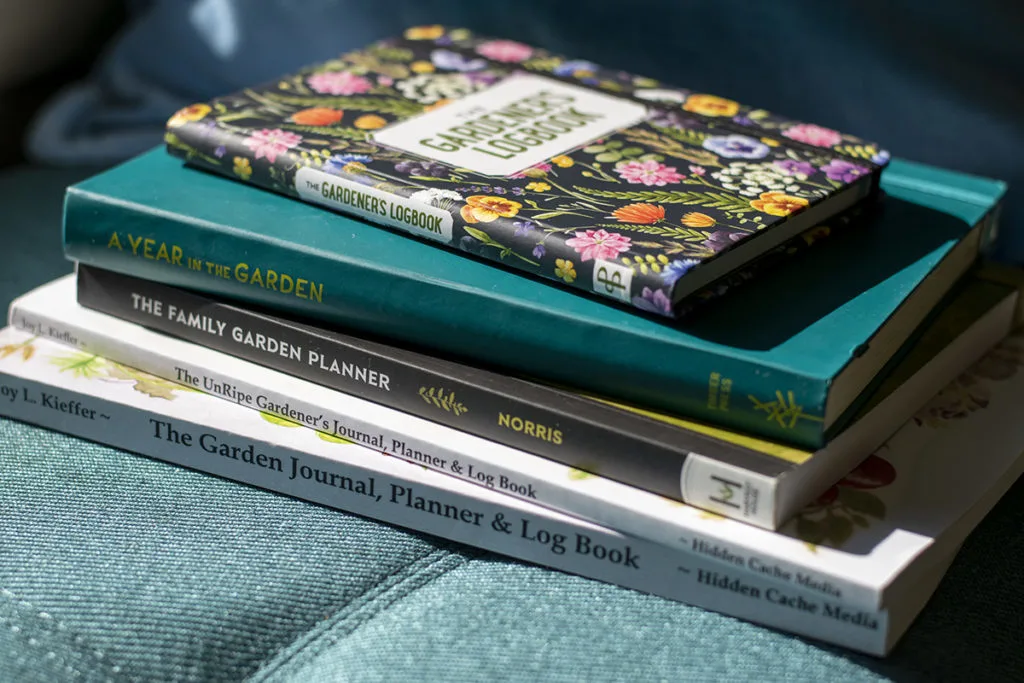
Though you’re likely ready to avoid any thought of gardening at the end of the growing season, it would be amiss not to take the time to evaluate your successes and failures over the past year.
Maybe you had your best tomato season ever, thanks to trellising them with the Florida Weave, or, like me, you learned that your family just doesn’t eat enough okra to justify giving it so much garden space.
Take the time to write all these insights down, because I guarantee you’ll remember a lot less than you expect once spring planting time rolls around again.
A stellar strategy for monitoring your progress all season long is to keep a garden journal. Most offer space to write down insights and observations every day you spend outdoors so that you can later look back at the whole season from a holistic perspective.
14. Order Next Year’s Seed Catalogs
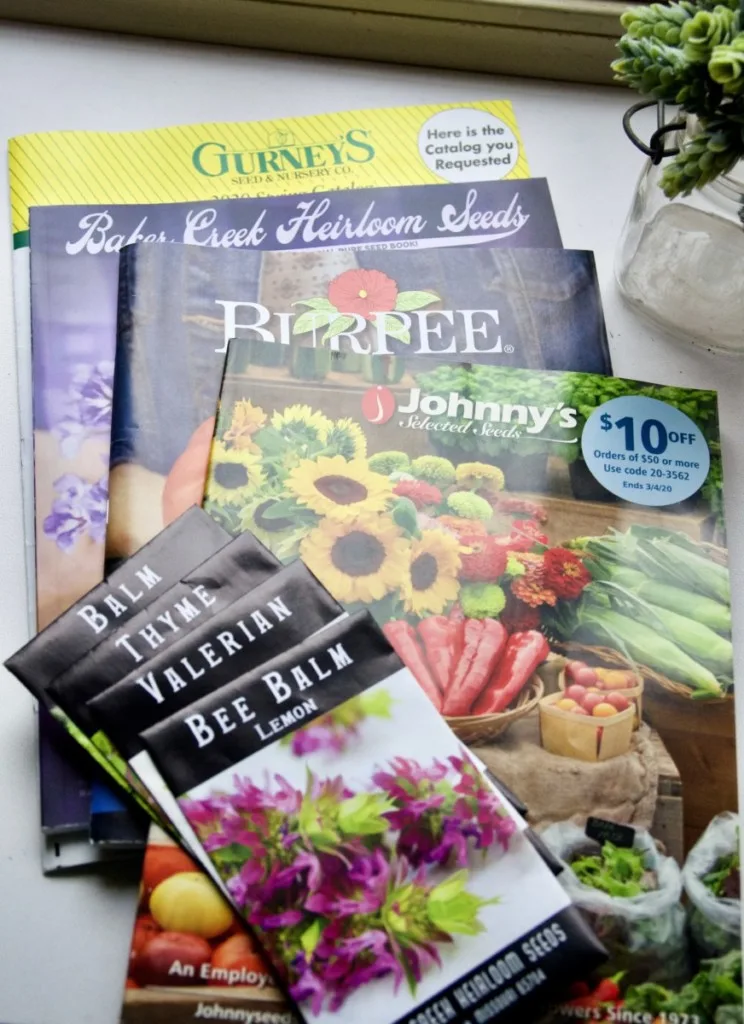
Finally, the end of fall is the perfect time to start dreaming about what you’ll grow next season. Put in your orders for seed catalogs early, and most should arrive around January or later. Some of my favorite options include the following:
- Baker Creek: This Missouri-based seed company specializes in rare and heirloom seeds from around the world. They are an excellent choice for home gardeners who only want a few seeds from a lot of varieties.
- Seed Savers Exchange: As a non-profit, purchases from Seed Saver’s Exchange help conserve and promote heirloom seeds and plants to protect future genetic diversity.
- Johnny’s Selected Seeds: Tailored more towards market growers, Johnnies offers excellent pricing and bulk discounts on hundreds of varieties that perform well at farmers’ markets. It’s also a great resource for farm equipment.
Finish Your Fall Garden on a High Note
The end of the summer gardening is a welcome break and a reminder of the natural pauses that come with the changing seasons.
Take the time to shut down your fall garden at the end of the growing season, and you’ll be setting yourself up for an even better year come springtime.

Get the famous Rural Sprout newsletter delivered to your inbox.
Including Sunday ramblings from our editor, Tracey, as well as “What’s Up Wednesday” our roundup of what’s in season and new article updates and alerts.

